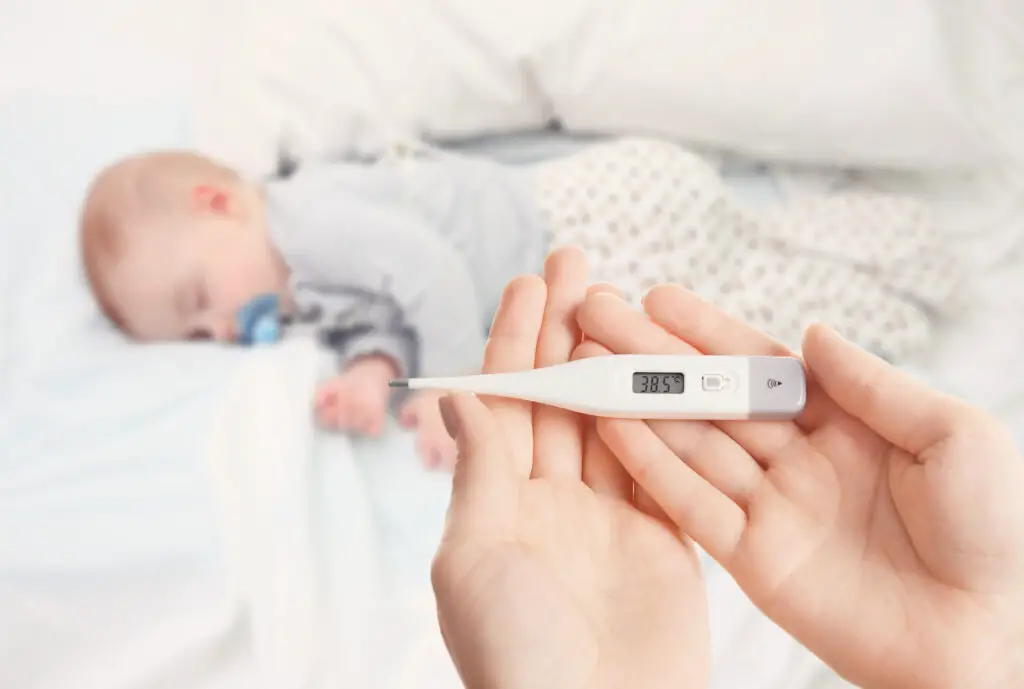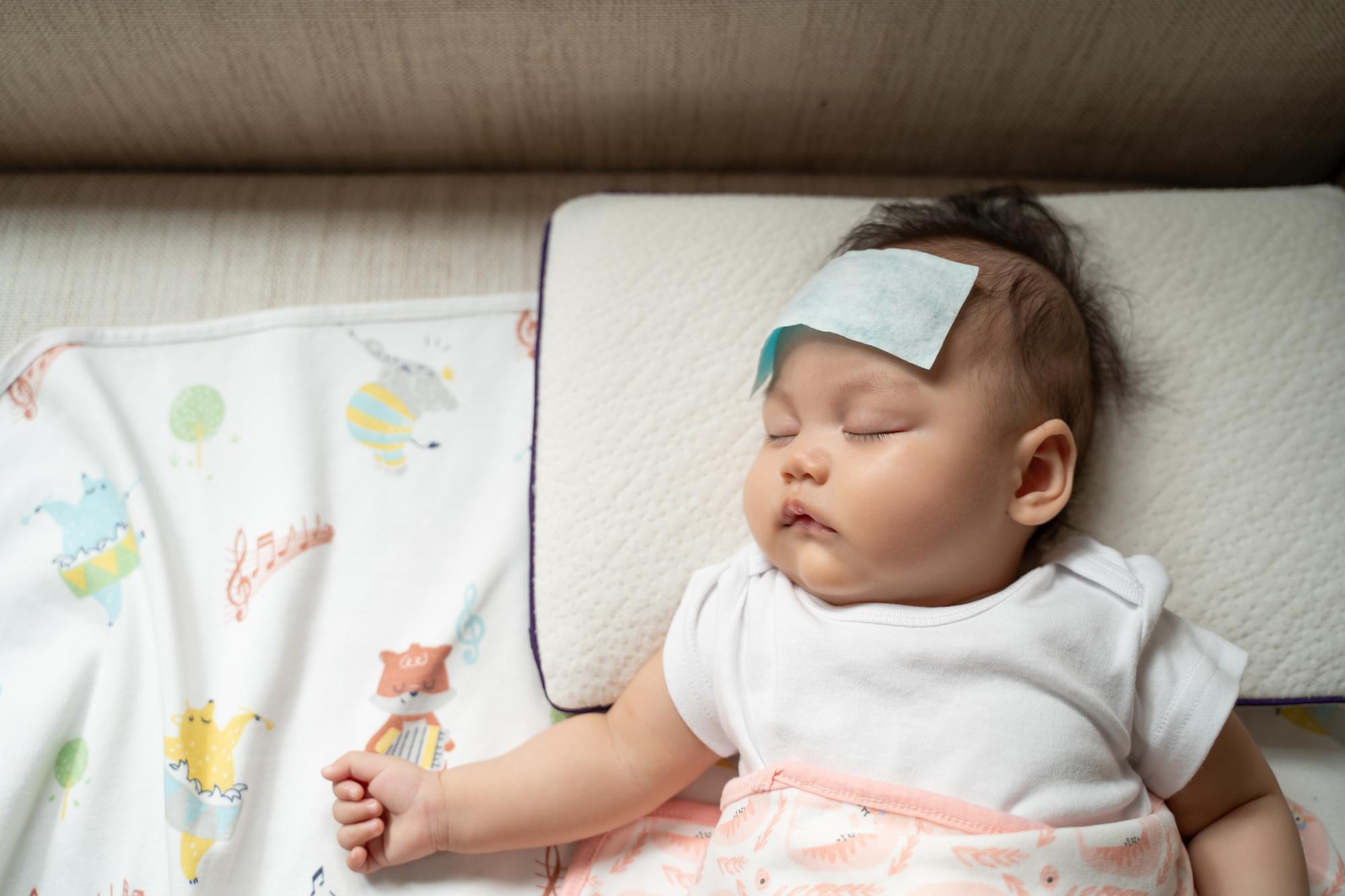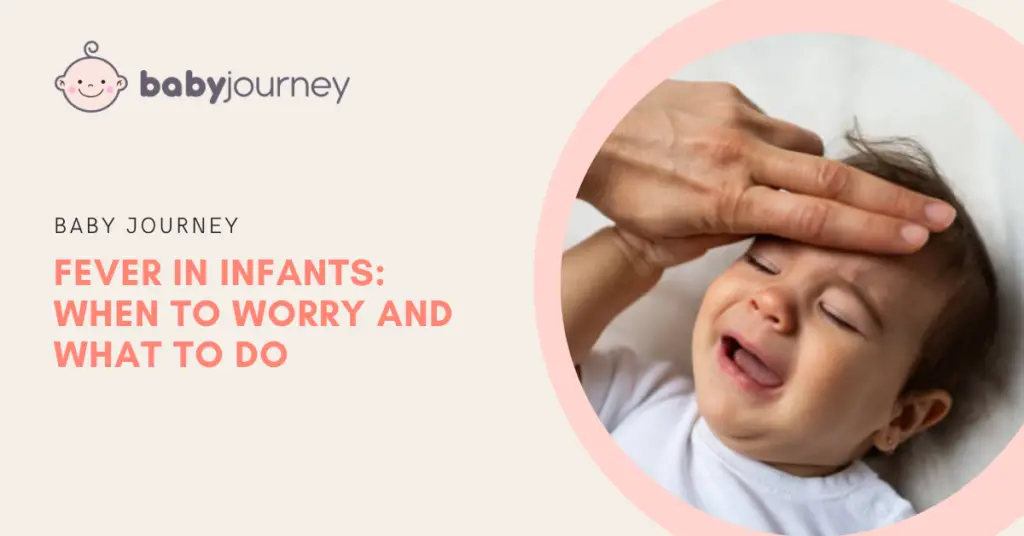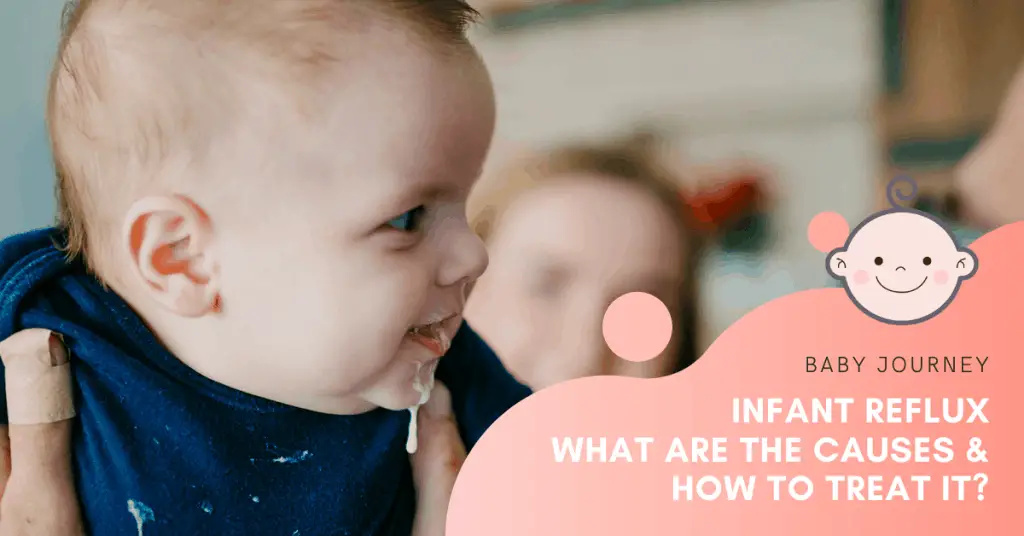Flushed cheeks. Teary eyes. The baby’s fever sets in. You, as a parent, are overcome by worry. However, it’s important to remind yourself that it’s their immune system working its hardest to curb illness. It’s scary, yes, but many infants can weather such storms. What you need to do as their carer is understand the warning signs of fever in infants and know when to call the doctor.
Fever fades as your baby heals up, as in many cases. But if high temperatures linger long or come with concerning symptoms, trust your gut and call your pediatrician at the soonest possible time. One out of a hundred children with fever may have a severe underlying condition that needs immediate treatment. You got to be sure.
This guide shares tips on how to take accurate baby fever readings and spot risky signs needing quick medical care, as well as the best ways to soothe your baby at home. Read on for valuable information and proper precautions so you can tackle fever in infants with utmost calm and confidence.
Understanding fever in infants

Fevers – defined as a body temperature above 100.4°F (38°C) – indicate the immune system working to combat infection. When your infant has a fever, it’s normal to see them flushed and exhibit increased heart rate and breathing. They may become fussier due to the heat and discomfort, as infant fevers sometimes cause head and body aches, shivering, and sweating.
To measure your baby’s temperature accurately, pediatricians often use one of two methods. Rectal temperatures give the most accurate reading for infants. The doctor inserts a digital rectal thermometer one-half to an inch inside the infant’s rectum. It’s best to have this method performed by medical professionals such as pediatricians from www.just4kidshealth.com.
Meanwhile, axillary (armpit) temperatures run about a degree lower. While it has a less accurate reading as signs of fever in newborn, this method is considerably easier to do with infants.
A digital thermometer’s tip is directly placed into the baby’s armpit, and it’s kept secure until the device beeps. Learn how to properly take your child’s temperature and know your baby’s baseline temp with this method so you can do it at home when needed.
A significant fever is a rectal or oral temperature over 100.4°F or axillary reading over 99°F. Low-grade fevers (100.4-102.2°F) commonly accompany viral illness. Higher temperatures happen less frequently but may require closer monitoring.
Common Causes of Fever in Infants
Viral infections like colds, flu, or gastroenteritis are frequently seen as culprits of fever in infants. Babies often get fevers after receiving immunization shots, too. Contrary to popular belief, teething in babies doesn’t cause fevers despite the slight increase in body temperature. If your infant has a high temperature during this stage, it may be a result of an underlying sickness.
Bacterial infections such as ear infections, pneumonia, UTI, or strep throat may also trigger fever. In rare cases, underlying conditions like Kawasaki disease or a milk protein allergy could be the reason.
Keep track of your baby’s symptoms and timeline of illness to best help the pediatrician determine the cause. With your observations, they can prescribe a treatment plan that works for your infant. Ultimately, the specific origin may not always be identified, so focus on monitoring and comfort care.
When to Worry: Recognizing Severe Signs of Baby Fever

For fevers above 100.4°F rectally, contact your baby’s pediatrician immediately, especially if your child is under three months old. They’re still building up their immune systems at this age, which means they’re more susceptible to illnesses.
Emergency care is a must for high fever in kids at or above 104°F, particularly if accompanied by symptoms such as a stiff neck, lethargy, or a sudden, unexplained rash. You might need to go straight to the ER if your baby’s fever persists for more than a day and comes with any of the following symptoms:
- Excessive vomiting
- Unresponsiveness or lack of alertness
- Sunken eyes or dry lips
- Difficulty breathing
- Dehydration, lack of urine, or dark-colored urine
- Seizures
If fever occurs with abnormal behavior changes, continuous crying, extreme irritability, or difficulty waking, schedule a doctor’s visit right away. This is one way of preventing complications like sudden infant death syndrome (SIDS), which was one of the leading causes of infant mortality in 2020.
Soothing Your Infant at Home: Safe and Effective Practices
The doctor may suggest infant-safe acetaminophen or ibuprofen for aches and lower baby fever. But on your part, make sure you check the labels and follow the recommended doses to the dot. There’s no room for mistakes here.
To give you an idea, ibuprofen dosages are typically dependent on the infant’s age, weight, and health condition unless they’re still under six months old.
In addition, dress your baby in light clothing so air can flow freely and to prevent overheating. Offer small sips of cool water often so fever sweats won’t lead to dehydration. Gently feel if hot skin is cooling so you can deduce if your comfort measures are working.
Keep close tabs on your baby temperature range and symptoms, watching for changes. Also, contact your child’s pediatrician regularly, especially if fever persists or you feel something’s off.
Additional Baby Fever Tips for Comfort and Care
Nothing soothes a feverish baby like the comforting warmth of their parent’s embrace. Rock and cuddle them to provide relief. And, as much as possible, maintain their regular sleep and feeding routines.
A cool mist humidifier could ease congestion and coughs. Try using saline drops before nasal suctioning to relieve your child’s little nose.
Sing sweet songs and read cozy stories to pass the long hours. Avoid aiming electric fans directly at your baby to lower their temperature as it may bring risks of colds or dust allergies.
As the caregiver in all this, make sure you get adequate rest, too! Stay patient and attentive.
Observe cues to discover what eases your baby best. In such circumstances, you’ve got to keep your spirits bright, knowing your loving care is helping the fever fade.
Conclusion
As a parent, your infant battling illness and fever isn’t an easy thing to witness. But breathe deep. Your steady care and vigilance are two important keys to your baby’s recovery.
It’s also necessary to trust your instincts so you’ll know when the doctor should guide the way. If concerns worry you, your pediatrician can advise you on the best path to take.
Every parent knows their child best – don’t doubt it even for a moment. Go with your gut if you start to think something’s wrong. Keep calm, care for your baby ever so tenderly, and sooner than you think, these trying times will pass.



